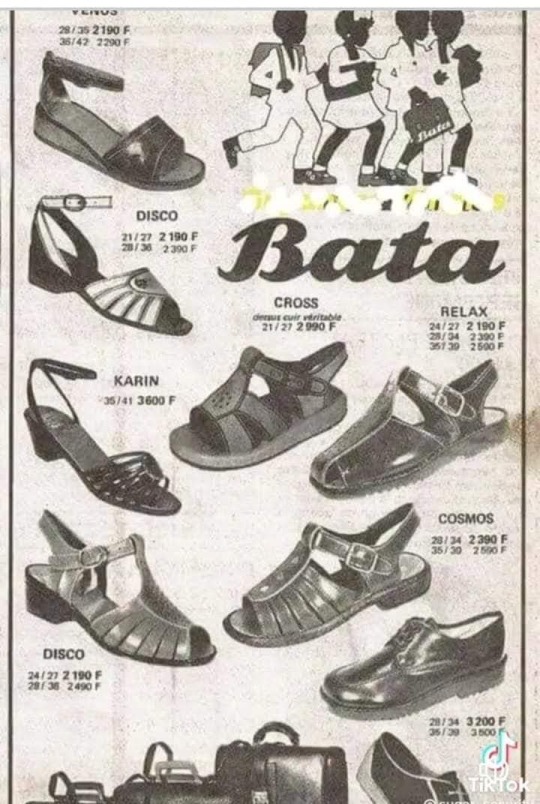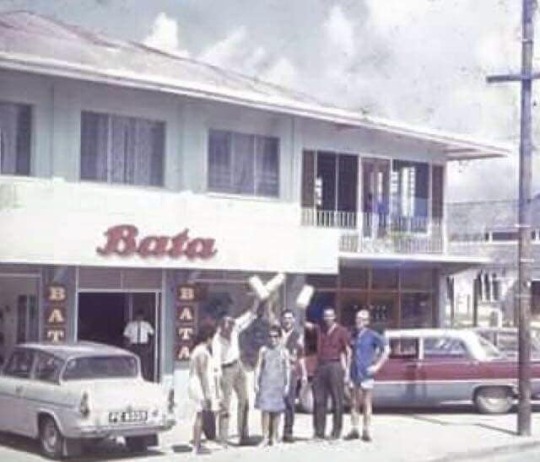#Galleryyuhself/from the Facebook page of Dominic Kalipersad
Explore tagged Tumblr posts
Photo


Galleryyuhself - A history of BATA and its establishment in Trinidad and Tobago.
From the Facebook page of Dominic Kalipersad - The Bata Company began exporting shoes to Trinidad in 1930 and two years later, it established shops on the island.Bata continued selling its shoes to Trinidad customers even after the Second World War, and the company ceased operations on the island in 1993.It sneakers, called Bata Bullets, were a hot seller for schoolchildren, probably due to the economical price, but they were not considered cool by the fashion-conscious.
#galleryyuhself/Bata#galleryyuhself/nostalgia#galleryyuhself/shoes#galleryyuhself/Bata Bullets#tumblr/Bata#tumblr/Bata in the Caribbean#tumblr/consumer history#BATA.#Bata bullets#shoes#history#culture#nostalgic#Dominic Kalipersad
1 note
·
View note
Photo

#Galleryyuhself/from the Facebook page of Dominic Kalipersad#Galleryyuhself/Pan/packaging#Galleryyuhself/storage/Pan/Trinidad and Tobago#Steelpan#Pan#Storage for Pan
0 notes
Text
History of Trinidad businesses: Schoolboy Parlour

Here is an image of a humble shop that grew into a major business in Trinidad.
Established in 1934, it was called Schoolboy Parlour, located opposite Arima Boys' Government School at the corner of King and Lopez Streets in Arima.
The shop was owned by Ramlal Maharaj and his wife Basso Tota-Maharaj.
It was set up on land that had been gifted to Basso by her mother Phoole Tota-Maharaj.
Its main customers were students, teachers and, of course, neighbourhood residents.
Over the years, the business grew to become a one-stop-shop that provided groceries, bakery products, variety store items and even a restaurant.
During WWII, the neighbourhood shop was a place where U.S. soldiers could purchase food and other basic commodities.


In the1960s, Schoolboy Parlour expanded its reach with the acquisition of an estate in Sans Souci, Toco, and supplied fresh produce to public markets and the Hi-Lo Food Stores’ Warehouse in Port-of-Spain.
Schoolboy Parlour has since evolved into the prominent Maharaj Group of Companies which comprises Maharaj West Side supermarket, Jumbo Foods, Ridgewood Plaza (1979) Ltd, and ADM Distributors Limited.
The Group is led by Ramlal and Basso's fourth son Balliram Maharaj who joined his father's business in 1958.
The businesses are a major player in the Distribution, Wholesale and Retail segments of the consumer goods value chain.
#Galleryyuhself/businesses in Trinidad and Tobago#Galleryyuhself/Ramlal Maharaj and his wife Basso Tota-Maharaj.#Galleryyuhself/from the Facebook page of Dominic Kalipersad
0 notes
Photo

~Galleryyuhself~ On World Afro Day, here’s a pic of the first Trini to win a beauty queen competition with an afro: Elicia Irish, in 1971.The 1970 Black Power Revolution changed, among other things, the definition of beauty and the beauty pageant business in T&T. Within a year of the event rocking the country, the organisers of the Jaycees Carnival Queen competition placed the crown on the head of a black woman with an Afro. Although Elicia Irish was only the second black woman to win the Jaycees crown - the first was Pauline Figuera in 1965 - Irish’s 1971 victory symbolised a shift from the dominance of a European aesthetic in defining feminine beauty. For years, the beauty competition had celebrated and idealised the beauty of women of European and mixed-race descent. The Jaycees show maintained the tradition of its the predecessor Carnival Queen competition that had been created by the Trinidad Guardian Celebrations Committee in 1947.Before 1970, few women of colour were chosen as beauty pageant winners. From the 1950s to the 1970s, the British High Commissioner to Port of Spain was responsible for sending a Miss Trinidad and Tobago winner to the Miss World pageant. The first Miss Trinidad-World, in 1954, was Seeta Indranie Mahabir, a light-skinned beauty who represented the country at the fourth edition of the Miss World competition in London. The failure of dark-skinned to win the beauty queen titles was a constant source of controversy. This was reflected in Attila the Hun’s 1955 calypso Beauty Contest:“ This Guardian competition Is nothing but real discrimination ...”..The Jaycees Carnival Queen competition continued the tradition of upholding white upper and middle class conventions, in contrast to the black and working class aesthetic, promoting a Eurocentric archetype of the ideal woman. The 1970 Black Power Movement revolutionised the psyche of the country that had experienced more that 400 years of colonial rule. In 1971, a black woman was given the Jaycees Carnival Queen crown. Ironically, it was also the final year of Jaycees Carnival Queen competition. Elicia Irish went on to marry Colin Mayers, Barbados’ consul general in Miami.
Taken from the Facebook page of Dominic Kalipersad
#Galleryyuhself/World Afro Day#Galleryyuhself/Carnival Queen#Galleryyuhself/Jaycees Carnival Queen#World Afro Day#Jacees Carnival queen#Black Power Movement#Attila the Hun/Calypsonian#Elicia Irish
7 notes
·
View notes
Photo


~Galleryyuhself~ An all time favorite image of early Trinidad and Tobago carnival from the Facebook page of Dominic Kalipersad ~~~Carnival on Frederick Street, Port-of-Spain, Trinidad, by W H Overend after a sketch by Melton Prior. From the Illustrated London News, 5 May 1888. Hand-coloured in the Victorian style and Carnival on Frederick Street, Port-of-Spain, Trinidad,1888. Drawing by Melton Prior, published in the Illustrated London News on 5 May 1888.
#Galleryyuhself/Trinidad Carnival 1888#Galleryyuhself/history/illustration/newspapers#Galleryyuhself/Carnival/Art/Illustration#Carnival#Frederick Street#Melton Prior#Illustration
7 notes
·
View notes